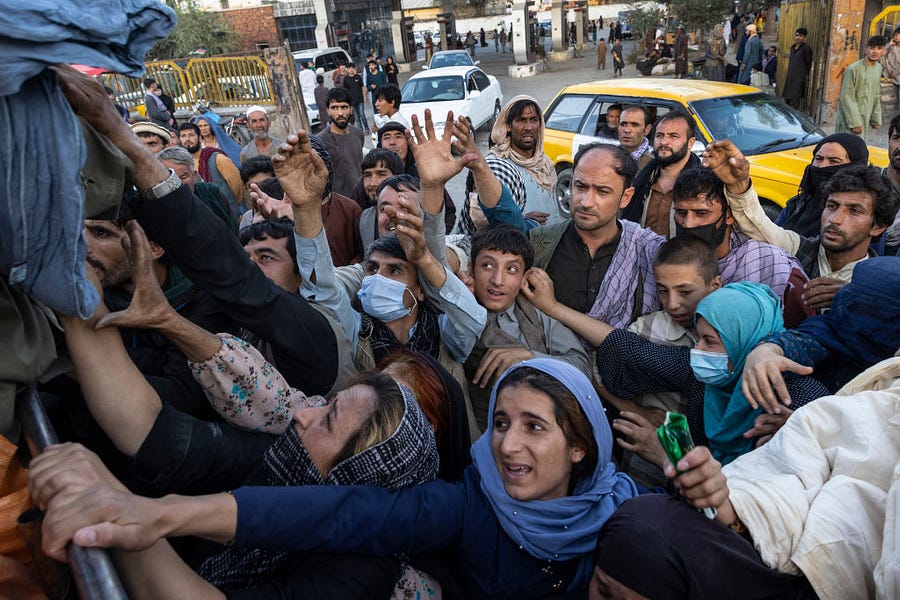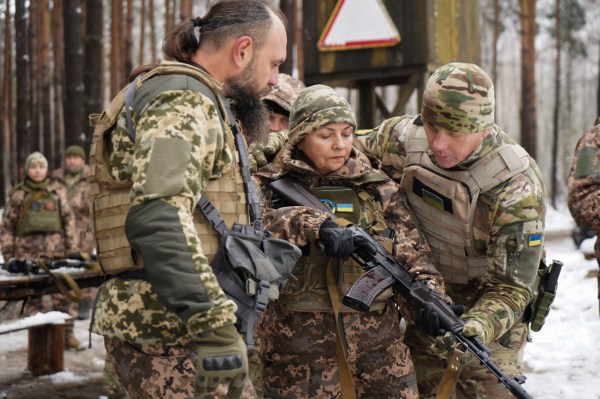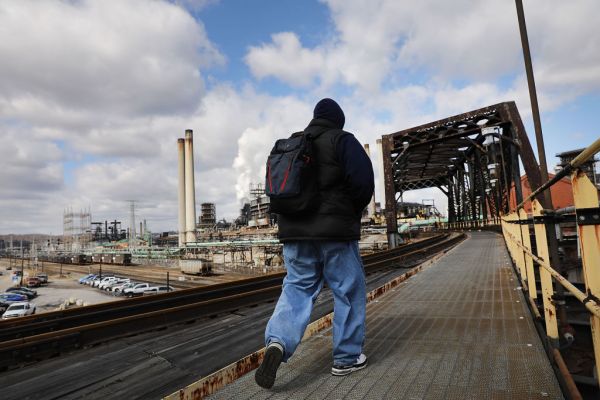There’s a saying that makes the rounds every single time an inevitable tragedy happens. A commentator or public official will shake their head sadly and say, “This wasn’t just predictable, it was predicted.” We’re at that stage of the Afghanistan debacle, and as we fight over the looming collapse of the Afghan government, it’s important to understand why—and how—we’re losing Afghanistan.
And there is no doubt that the nation is slipping away. In fact, even the word “slipping” understates the crisis. The headlines are exceedingly grim. Hours ago, the New York Times reported that the Taliban had seized its seventh provincial capital in five days. Moreover, the American response to the Taliban’s advances has been tepid at best. Here’s the New York Times again, in a Sunday piece demonstrating that our Afghan allies must now “fend for themselves”:
If the Taliban had seized three provincial capitals in northern Afghanistan a year ago, like they did on Sunday, the American response would most likely have been ferocious. Fighter jets and helicopter gunships would have responded in force, beating back the Islamist group or, at the very least, stalling its advance.
But these are different times. What aircraft the U.S. military could muster from hundreds of miles away struck a cache of weapons far from Kunduz, Taliqan or Sar-i-Pul, the cities that already had been all but lost to the Taliban.
Why are we losing Afghanistan? The shortest accurate answer is that we’ve chosen to lose Afghanistan. With minimal exertion of military force (relative to our immense national strength), we could have prevented—and for a long while did prevent—this collapse. In fact, America hasn’t suffered a combat casualty in Afghanistan since February 8, 2020. Our military footprint was a fraction of the footprint at the height of the Afghan surge. The Taliban were never going to defeat even a small American force so long as that force remained in the nation.
The better question is, why didn’t we win in Afghanistan? Why weren’t we able to completely rout the Taliban, stand up an effective, independent government, train and sustain a competent Afghan Army, and then leave secure in the knowledge that the Taliban would not rise again?
The Trump right believes it has the answer to that question. From Trump to Tucker, they call out the culprit: “woke generals” who are allegedly better at playing progressive political games than fighting America’s enemies.
But without defending everyone in American military leadership (as in every American war, America deployed generals who displayed wildly different levels of competence), the fundamental challenge was more a matter of mission than execution.
Or to put it another way, the military accomplished the mission (defeating the Taliban in battle) that our military could reasonably have been expected to accomplish. It did not accomplish the mission (building a competent Afghan government and military) that our military cannot reasonably be expected to accomplish.
The military historian Bing West has spent years embedding with troops in Afghanistan and Iraq, and in February this year he wrote an important, thought-provoking piece entitled, “Three Wars, No Victory—Why?” He allocated America’s failures in Afghanistan equally between failed military strategy and failed policy. Here’s his key statement regarding the relevant military doctrine:
In over a decade of reporting, I embedded in Nuristan, the Korengal, Kunar, Nuristan, Marjah, Nad Ali, Sangin, and places in between. In not one locale did our grunts believe the Afghan soldiers would hold the countryside after the Americans left. Nine American generals held the top command in Afghanistan. Yet throughout their combined tenures, the underlying military doctrine—our soldiers as nation-builders—remained unchallenged. This glaring gap separating the assessments of the grunts from those of the generals demands explanation.
Moreover, as West notes, we faced disadvantages in Afghanistan. The Taliban enjoyed relative sanctuary in Pakistan. They could rest, refit, and recruit. The Afghan government was, if anything, more corrupt than Iraq’s. The society was more tribal and less developed.
Thus, while it’s wrong to say that we didn’t accomplish anything in the nation-building mission, it’s absolutely correct that we didn’t accomplish enough, and there was no reasonable timetable to accomplish enough to leave the nation with any degree of confidence that its government could stand alone.
(For those who believe we had no impact on Afghanistan, my friend Jonathan Rauch offers a useful corrective. As he relates in an important piece in Persuasion, “Infant mortality dropped by half during the U.S. operation. Life expectancy improved by six years. Electricity consumption, a key quality of life indicator, increased by a factor of 10. Years in school increased by at least three years for men and four for women. University graduates rose from under 31,000 to almost 200,000.”)
Sadly, the failure of the nation-building mission obscures the Afghan War’s central success, the very success that we put at risk with our headlong withdrawal—the defense of the United States of America from terrorist attack. I’ve written this before, and I’ll keep writing it, but if you told Americans on September 12, 2001, that we were about to embark on a military mission that would help keep America safe from a significant terror attack for twenty consecutive years, they would have been astounded. It would have been tough for them to imagine that level of success.
Yet the failure of the secondary nation-building mission is causing us to unacceptably risk the successes of the primary self-defense mission of the American military. We are in the process of handing the Taliban back its territory and granting jihadists a safe haven. And we’re doing that when we know beyond a shadow of a doubt that terrorists can hit our cities even when their safe havens are located in backwards, tribal societies on the far side of the world.
There is a consistent theme in modern American military history, stretching all the way back to Korea. Match the United States against a deployed military force of virtually any type—whether Chinese, North Vietnamese, or Iraqi regulars or Viet Cong, ISIS, or Taliban irregulars—and we will win that fight. Our capacity to engage in force-on-force direct action is undiminished. But ask the military to go beyond direct action–to prop up a regime, train an allied army, and leave that regime and army in position to defeat its enemies independently, and our record is much less strong.
The problem, of course, is that the real world doesn’t leave a nation with the choice of conducting only the kind of operations in which it excels. Sometimes geopolitical realities relegate the military to the long, grinding fight. Defend South Vietnam without invading the North. Prop up the government in Kabul while the Taliban can rest in Pakistan.
These tasks are profoundly draining and difficult even if we have the military strength to hold off our enemies indefinitely. The tragic reality, however, is that unlike in Vietnam, if we choose to cut our losses and walk away, we are choosing to hand a victory to the very military force that sheltered, defended, and partnered with the jihadists who struck our homeland more effectively than any foreign enemy since the British burned our capital in the War of 1812.
Because of the lesser failure, we’re throwing away the greater victory. I pray that our nation does not suffer a deadly consequence.
One last thing …
It’s been a while since I linked to an Operations Room mini-documentary, but this is one of my favorites. Operation Linebacker II is remarkable in retrospect. We sent B-52s into the teeth of Hanoi’s air defenses to try to bomb the North Vietnamese back to the peace table. Losses were heavy, yet the die was already cast. South Vietnam was doomed:









Please note that we at The Dispatch hold ourselves, our work, and our commenters to a higher standard than other places on the internet. We welcome comments that foster genuine debate or discussion—including comments critical of us or our work—but responses that include ad hominem attacks on fellow Dispatch members or are intended to stoke fear and anger may be moderated.
You are currently using a limited time guest pass and do not have access to commenting. Consider subscribing to join the conversation.
With your membership, you only have the ability to comment on The Morning Dispatch articles. Consider upgrading to join the conversation everywhere.